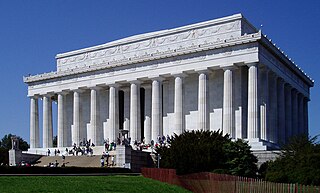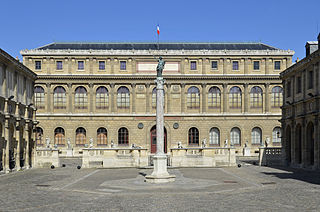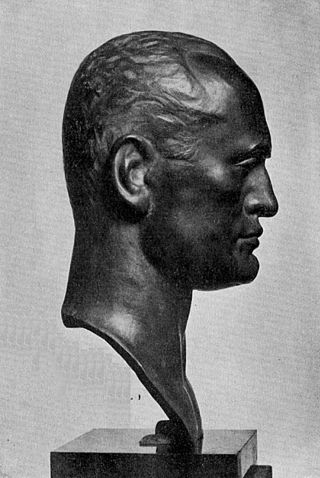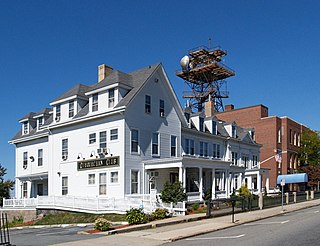
Lee Oscar Lawrie was an American architectural sculptor and a key figure in the American art scene preceding World War II. Over his long career of more than 300 commissions Lawrie's style evolved through Modern Gothic, to Beaux-Arts, Classicism, and, finally, into Moderne or Art Deco.
Parsons School of Design, known colloquially as Parsons, is a private art and design college located in the Greenwich Village neighborhood of New York City. Founded in 1896 after a group of progressive artists broke away from established Manhattan art academies in protest of limited creative autonomy, Parsons is one of the oldest schools of art and design in New York.

Beaux-Arts architecture was the academic architectural style taught at the École des Beaux-Arts in Paris, particularly from the 1830s to the end of the 19th century. It drew upon the principles of French neoclassicism, but also incorporated Renaissance and Baroque elements, and used modern materials, such as iron and glass. It was an important style in France until the end of the 19th century.

Henry Bacon was an American Beaux-Arts architect who oversaw the engineering and design of the Lincoln Memorial in Washington, D.C., built between 1915 and 1922, which was his final project before his 1924 death.

Rene Paul Chambellan was an American sculptor who specialized in architectural sculpture. He was also one of the foremost practitioners of what was then called the "French Modern Style" and has subsequently been labeled Zig-Zag Moderne, or Art Deco. He also frequently designed in the Greco Deco style.

Alexander Stirling Calder was an American sculptor and teacher. He was the son of sculptor Alexander Milne Calder and the father of sculptor Alexander (Sandy) Calder. His best-known works are George Washington as President on the Washington Square Arch in New York City, the Swann Memorial Fountain in Philadelphia, and the Leif Eriksson Memorial in Reykjavík, Iceland.

Victor Alexandre Frederic Laloux was a French Beaux-Arts architect and teacher.

Boston Architectural College is a private college in Boston. It is New England's largest private college of spatial design. The college's main building is at 320 Newbury Street in Boston's Back Bay neighborhood.

Henry Hensche was an American painter and teacher.

The Royal Academy of Fine Arts of Brussels is an art school established in Brussels, Belgium. It was founded in 1711. Starting from modest beginnings in a single room in Brussels' Town Hall, it has since 1876 been operating from a former convent and orphanage in the Rue du Midi/Zuidstraat, which was converted by the architect Victor Jamaer. The school has played an important role in training important local artists.

Emmanuel Louis Masqueray (1861–1917) was a Franco-American preeminent figure in the history of American architecture, both as a gifted designer of landmark buildings and as an influential teacher of the profession of architecture dedicated to the principles of Beaux-Arts architecture.

Frederic Charles Hirons was an American architect, based in New York City, who designed the Classical George Rogers Clark National Memorial, in Vincennes, Indiana, among the last major Beaux-Arts style public works in the United States, completed in 1933.

École des Beaux-Arts refers to a number of influential art schools in France. The term is associated with the Beaux-Arts style in architecture and city planning that thrived in France and other countries during the late nineteenth century and the first quarter of the twentieth century.

The National Society of Mural Painters (NSMP) is an American artists' organization originally known as The Mural Painters. The charter of the society is to advance the techniques and standards for the design and execution of mural art for the enrichment of architecture in the United States.

John Clements Gregory was an American sculptor.

Frank Tolles Chamberlin was an American painter, muralist, sculptor, and art teacher.

Vincent Glinsky was an American sculptor. He is especially noted for his architectural decorations.

K. M. Oswald Hoepfner was an American sculptor noted for his work as an architectural sculptor.

Nathaniel Cannon Smith (1866–1943), professionally known as Nat. C. Smith, was an American painter and architect of New Bedford, Massachusetts.

Herbert Langford Warren was an English architect who practiced in New England. He is noted for his involvement in the American Arts and Crafts movement, and as the founder of the School of Architecture at Harvard University.


















